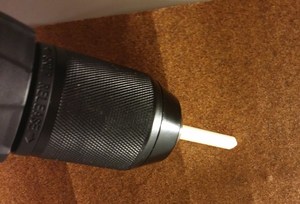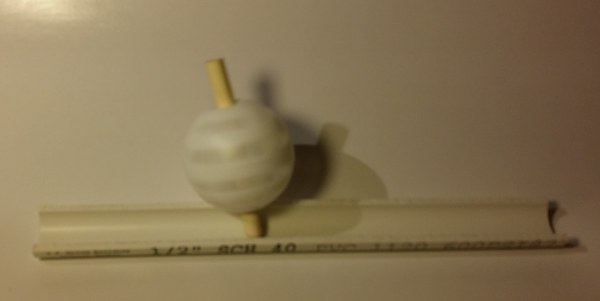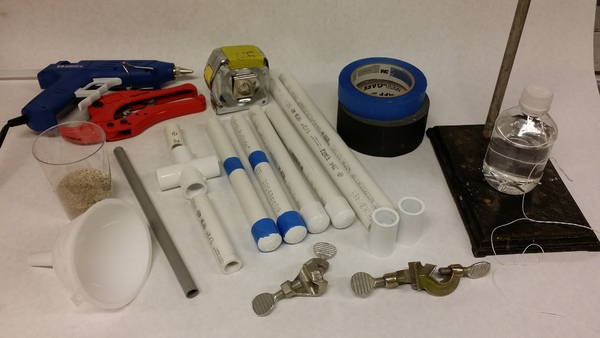When a spinning baseball, soccer ball, tennis ball, or table tennis ball move through the air, they feel a force that is caused by the spin. The force, called the Magnus Force or Effect, can be up, down, or side-to-side. You can see more about the effect at Wikipedia. You can watch a hopelessly perky video from SciGirl to get more information.
(Adapted a the demostration called Spin Doctor from Dr. Baseball also known as California State University Chico Professor David Kagan.)
The idea is that after you spin the ball in the PVC trough, the ball moves to the side. In this case, looking down, if you spin the ball clockwise, it will slide to the left. If you spin it counterclockwise, it will slide to the right.
Materials:
- Golf practice ball
- Wooden disposable chopsticks
- 9 inches of 1/2 inch PVC
- Sandpaper (fine)
- Drill
- Hacksaw (not shown)
Procedure
- Cut the PVC to 9 inches. A PVC cutter or a hacksaw will work.
- Cut the PVC tube the long direction to make a trough. I used a bandsaw for this, but a hacksaw and a vice will work fine.
- Put the ball on the chopstick to find where the chopstick fits snugly.

- Cut using the hacksaw the chopstick so that it is about 3 1/2 inches long. About 1/2 inch should extend from the bottom and 1 inch from the top.
- Take the wooden dowel and chuck it into an electric drill. Tack down the sandpaper. Hold at an angle to make a very shallow point on the chopstick. Much, much shallower than a pencil point. Then round over the top.

- Push the peg into the practice golf ball. You will need to fiddle with the exact amount sticking out on each side. The lower the practice golf ball, the better the top will spin, but it will catch on the trough. Higher, the top will be unstable.
- Blow on the ball. You don't want to be too close, 10 to 12 inches is good. If you are too close, you will push the top over.


